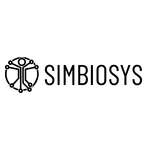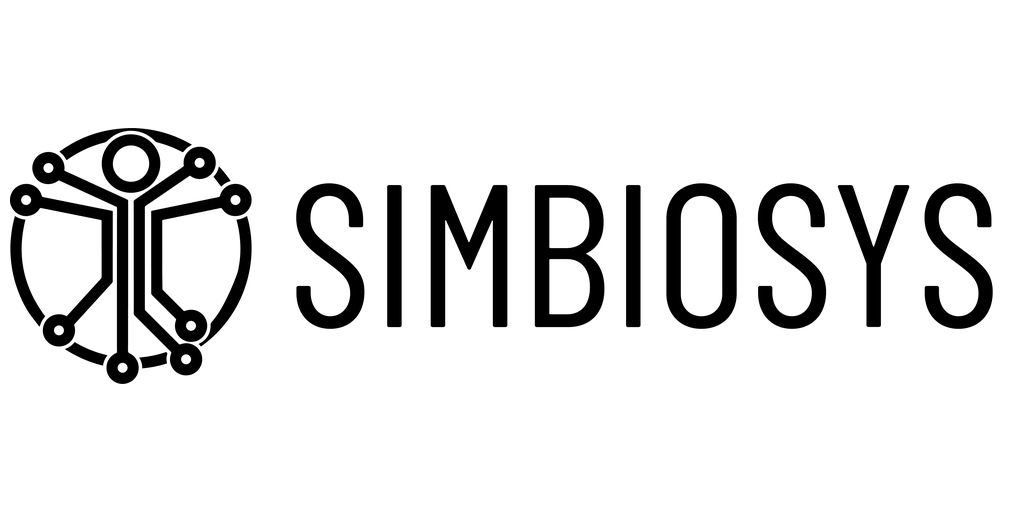CHICAGO–(BUSINESS WIRE)–SimBioSys, a TechBio company unlocking the power of spatial biophysics with artificial intelligence (AI) and data science to redefine precision medicine for cancer with software tools, recently presented new data from its TumorSight and PhenoScope platforms at the 46th Annual San Antonio Breast Cancer Symposium (SABCS), held from December 5-9, 2023.
Data from both internal and external validation studies were shared in six separate poster presentations at the conference. The results included collaborations with top cancer research institutions, multi-institutional analysis, enhanced visualization, and volumetric prediction capabilities to aid surgical planning.
“We were thrilled to share these exciting data with the broader breast cancer research community, which are a testament to the utility of our first of its kind digital diagnostic & treatment planning platforms, TumorSight and PhenoScope, to support a patient’s end-to-end journey in their battle against cancer,” said Tushar Pandey, Chief Executive Officer at SimBioSys. “We also extend our gratitude toward our incredible collaborators and look forward to expanding our research partnerships and in the near future supporting their clinical care.”
The presentations and key findings are shared below and can also be found on the SimBioSys website.
(PO2-01-01) Biophysical Simulation Using DCE-MRI to Forecast Response to NAT in HER2+ Patients, with Glucose Characterization and Orthogonal Validation Using FDG-PET.
Collaborators: City of Hope, Oregon Health & Sciences University
Research Summary: We conducted 3D biophysical simulations of individual HER2+ breast cancer patients to forecast responses to neoadjuvant chemotherapy (NAT).
Key Findings:
- SimBioSys’ biophysical simulations of HER2-targeted therapy accurately predicted patient response, yielding predictive accuracy of 0.83.
- Further, our team was able to characterize the performance by showing correlation of the perfusion maps, constructed from the 3D biophysical simulations on patient DCE-MRI, with two PET modalities that are representative of the tumor microenvironment.
- This novel approach could be used in both the research and clinical settings, offering actionable information on what drives patient-specific therapeutic response for more individualized care.
(PO2-02-11) Radiomics and an Erosion Model to Predict Post-Neoadjuvant Therapy Tumor Characteristics for Personalized Breast Cancer Treatment.
Collaborators: Northwestern Medicine, University of North Carolina, Baylor Scott & White
Research Summary: We used pre-treatment imaging data to accurately predict neoadjuvant therapy (NAT) effectiveness.
Key Findings:
- The predicted tumors clinically relevant characteristics (tumor volume, convex hull volume, and morphological/spatial characteristics) showed close agreement with post-NAT imaging ground truth.
- By providing reliable estimates of post-NAT tumor characteristics using SOC pre-NAT data, this predictive model could enable personalized treatment planning and patient stratification to optimize patient care.
(PO1-01-05) Spatial PK/PD Model with HER2 Expression for Predicting Individual Tumor Response to TDM1.
Research Summary: We developed a spatial PK/PD model for the antibody-drug conjugate trastuzumab emtansine (T-DM1) and explored the relationship between HER2 target expression and other tumor microenvironment features.
Key Findings:
- SimBioSys’ spatial PK/PD analyses improve prognostic predictions compared to HER2 gene expression data alone.
- The spatial biophysical model demonstrated that features of the spatial tumor microenvironment also influence response in addition to target expression.
(PO2-02-10) Predicting the Feasibility of Breast Conserving Surgery Using Pre-treatment Standard of Care DCE-MRI: A Novel Clinical Decision Support Tool for Breast Cancer Surgical Planning.
Collaborators: University of Chicago, University of Alabama, Mayo Clinic, Northshore Health
Research Summary: We developed a tool capable of providing informed recommendations on breast conserving surgery (BCS) or mastectomy based on standard of care imaging patient data.
Key Findings:
- TumorSight successfully predicted BCS in 76% of cases, and mastectomy in 61%.
- TumorSight and the BCS Feasibility Score help empower both patients and clinicians with information and tools to facilitate surgical planning decisions.
(PO2-07-04) Applying the Alliance Trial Guidelines in Multi-focal Breast Disease Using an Artificial Intelligence Computational Platform: Economic Analysis and Cosmetic Sensitivity.
Collaborators: Mayo Clinic, University of Cincinnati, University of Chicago, Baylor College of Medicine
Research Summary: We evaluated a patient cohort to better understand the economic impact of the Alliance trial and further categorize patients that would most benefit without suffering cosmetic impact.
Key Findings:
- Our economic analysis of BCS vs. mastectomy revealed an estimated $17,000-$28,500 cost savings for BCS patients with private insurance, suggesting that both decreased costs and improved quality-of-life can be mutually aligned.
- We estimated that BCS conversion from mastectomy offers to provide a net savings of $170-350 million annually.
(PO2-03-01) Personalized 3D Tumor Models Drive Shared Decision-making in Early Breast Cancer.
Collaborators: Patient Advocates in Research, Dana-Farber Cancer Institute
Research Summary: Early breast cancer Patient Opinion Leaders (POLs) and surgeons were surveyed to assess TumorSight’s potential impact on shared decision making for breast cancer surgical options.
Key Findings:
- POLs and surgeons showed positive reception to TumorSight visualization for surgical planning and decision-making.
- POLs noted that many patients don’t know that they have a choice in surgery.
- 90% of POLs believed visualization is very important to early breast cancer patients, and 80% believed it will increase confidence in their decisions and in their surgeon.
- Computational tools such as TumorSight may facilitate patient understanding and improve patient-tailored treatments.
About SimBioSys:
SimBioSys is a TechBio company deploying a combination of artificial intelligence, data science, and spatial biophysics to redefine precision medicine, transform patient care, and defeat cancer. By seeing cancer more completely, SimBioSys aims to empower clinicians, patients, and researchers with a more informed understanding of a patient’s tumor to optimally assess all available options and deliver on the promise of truly individualized patient care. To learn more, visit us at https://www.simbiosys.com/.
Contacts
Sarah Ellinwood
540-958-1011
Sarah.ellinwood@themarketelement.com
- SEO Powered Content & PR Distribution. Get Amplified Today.
- PlatoData.Network Vertical Generative Ai. Empower Yourself. Access Here.
- PlatoAiStream. Web3 Intelligence. Knowledge Amplified. Access Here.
- PlatoESG. Carbon, CleanTech, Energy, Environment, Solar, Waste Management. Access Here.
- PlatoHealth. Biotech and Clinical Trials Intelligence. Access Here.
- Source: https://www.fintechnews.org/simbiosys-presents-new-data-for-breast-cancer-personalized-medicine-platforms-at-the-46th-annual-san-antonio-breast-cancer-symposium/
- :is
- 2023
- 3d
- 500
- 7
- a
- Able
- accuracy
- accurately
- actionable
- addition
- advocates
- against
- Agreement
- AI
- Aid
- aims
- Alabama
- aligned
- All
- Alliance
- alone
- also
- an
- Analyses
- analysis
- and
- annual
- Annually
- Applying
- approach
- ARE
- artificial
- artificial intelligence
- Artificial intelligence (AI)
- AS
- assess
- At
- available
- based
- Battle
- BE
- believed
- below
- benefit
- Better
- between
- Biophysics
- both
- Breast cancer
- broader
- business
- Business Wire
- by
- CAN
- Cancer
- cancer research
- Cancer Treatment
- capabilities
- capable
- care
- cases
- characteristics
- characterize
- chicago
- chief
- Chief Executive
- chief executive officer
- choice
- City
- clinic
- Clinical
- clinicians
- Close
- Cohort
- collaborations
- collaborators
- College
- COM
- combination
- community
- company
- compared
- completely
- computational
- conducted
- Conference
- confidence
- Conversion
- Convex
- Correlation
- Cost
- cost savings
- Costs
- could
- data
- data science
- December
- decision
- Decision Making
- decisions
- decreased
- deliver
- demonstrated
- deploying
- developed
- diagnostic
- digital
- Disease
- Dont
- drive
- drives
- Early
- Economic
- Economic Analysis
- Economic Impact
- effectiveness
- empower
- enable
- end-to-end
- enhanced
- estimated
- estimates
- evaluated
- exciting
- executive
- Executive Officer
- expanding
- Explored
- expression
- extend
- external
- facilitate
- feasibility
- Features
- findings
- First
- For
- Forecast
- Forward
- found
- from
- further
- future
- gratitude
- Ground
- guidelines
- Have
- Health
- Held
- help
- hope
- HTTPS
- Imaging
- Impact
- important
- improve
- improved
- in
- included
- Increase
- incredible
- individual
- influence
- information
- informed
- institutions
- insurance
- Intelligence
- internal
- IT
- ITS
- journey
- jpg
- Key
- Kind
- Know
- leaders
- LEARN
- Look
- Making
- many
- Maps
- May..
- mayo
- medicine
- million
- model
- models
- more
- most
- mutually
- Near
- net
- New
- North
- north carolina
- noted
- novel
- of
- offering
- Offers
- Officer
- on
- Opinion
- Optimize
- Options
- or
- Oregon
- Other
- our
- partnerships
- patient
- patients
- performance
- Personalized
- planning
- platform
- Platforms
- plato
- Plato Data Intelligence
- PlatoData
- POLS
- positive
- potential
- power
- Precision
- predict
- predicted
- predicting
- prediction
- Predictions
- Presentations
- presented
- presents
- private
- promise
- provide
- providing
- recently
- reception
- recommendations
- redefine
- relationship
- relevant
- reliable
- representative
- research
- Research Institutions
- researchers
- response
- responses
- Results
- Revealed
- Said
- San
- Savings
- Science
- SCIENCES
- score
- scott
- seeing
- Sensitivity
- separate
- settings
- Share
- shared
- showed
- simulation
- SIX
- Software
- Spatial
- standard
- studies
- Successfully
- such
- suffering
- SUMMARY
- support
- Supporting
- surgeon
- Surgery
- surgical
- surveyed
- Symposium
- Target
- team
- testament
- that
- The
- their
- These
- they
- this
- thrilled
- to
- tool
- tools
- top
- toward
- Transform
- treatment
- treatments
- trial
- truly
- truth
- two
- understand
- understanding
- university
- University of Chicago
- University of Cincinnati
- unlocking
- us
- used
- using
- utility
- validation
- very
- Visit
- visualization
- volume
- vs
- was
- we
- were
- What
- which
- will
- Wire
- with
- without
- would
- yielding
- zephyrnet















